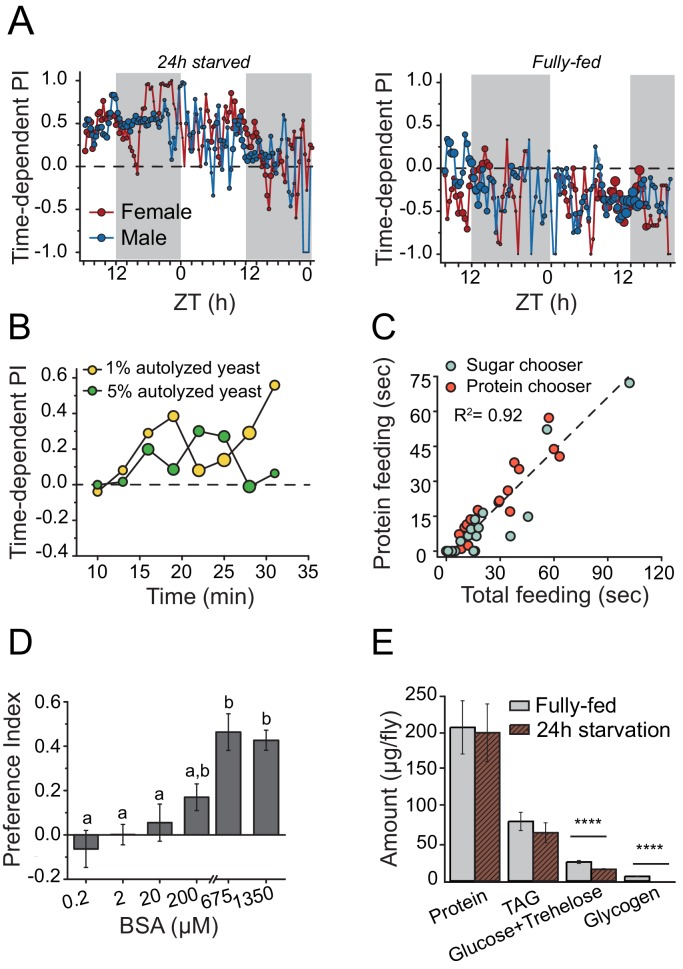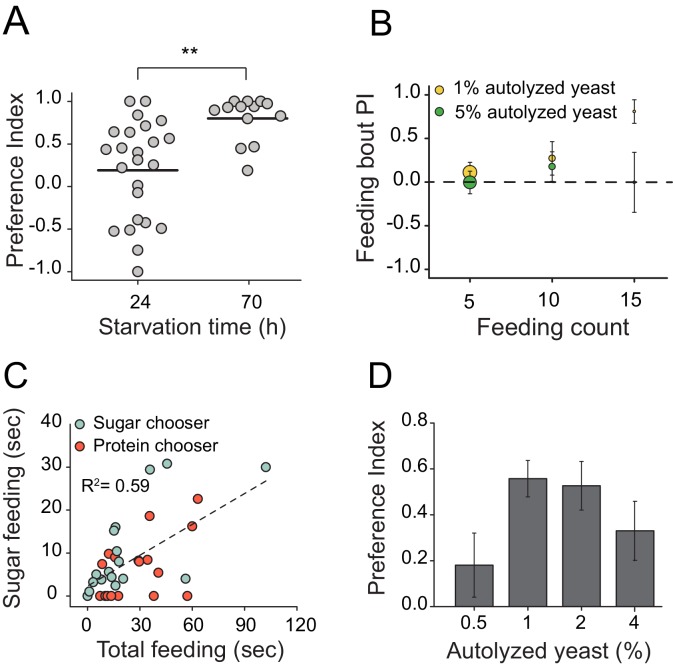Figure 1. Drosophila demonstrates energy-state dependent protein feeding preference.
(A) Male and female Canton-S flies' real-time feeding preference over 24 hr. The choice was given as 2% autolyzed yeast (w/v) +1% sucrose (w/v) vs. 1% sucrose (w/v). Gray shades on the graphs indicate "light-off" periods. The size of the symbols is proportional to the number of flies that were feeding during the given time period (fully-fed female flies N=17; fully-fed male flies N=21; starved female flies N=10; starved male flies N=11). A Preference Index (PI) = 1 indicates complete preference for the yeast-containing food. (B) Time-dependent PI plot from flies given a choice between 1% sucrose vs. 1% autolyzed yeast or 1% sucrose vs. 5% autolyzed yeast. Similar yeast preference is observed in both experiments, and in the first experiment the diets are isocaloric. (C) Flies that had increased total food consumption during the choice assay were likely to eat more protein meal. From the continuous FLIC data, we identified, for each fly, its first meal choice (sugar or protein chooser), time spent on protein feeding, and total feeding time at the end of a 30 min choice experiment. Flies were given a choice between isocaloric 1% sucrose vs 1% autolyzed yeast. Linear regression analysis revealed that total feeding time positively correlated with the protein feeding time (F(1,32)= 173.7, P<1.8E−14). (D) 24 hr-starved female flies' BSA preference was dose-dependent. Bars indicate the mean and the standard error of the mean (SEM). (N= 8–14 per each concentration treatment. Letters differentiate groups that are significantly different from one another as determined by Tukey's multiple-comparison at α=0.05) (E) Quantification of stored nutrient levels in fully-fed or 24 hr-starved female flies. Flies lost a significant amount of carbohydrate reserves after 24 hr of starvation. (P values determined by two-way ANOVA, followed by Tukey's multiple-comparison test. ***P≤0.0001).


